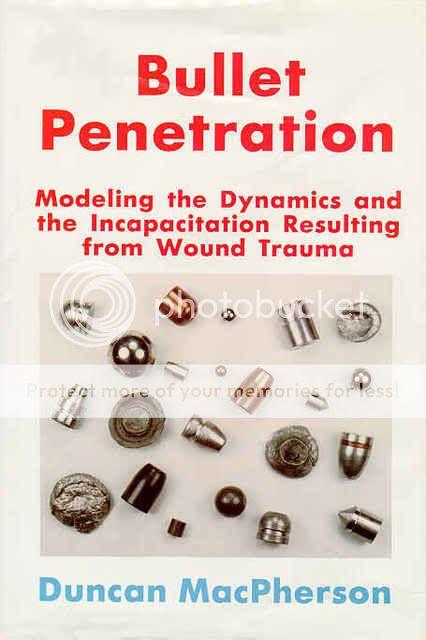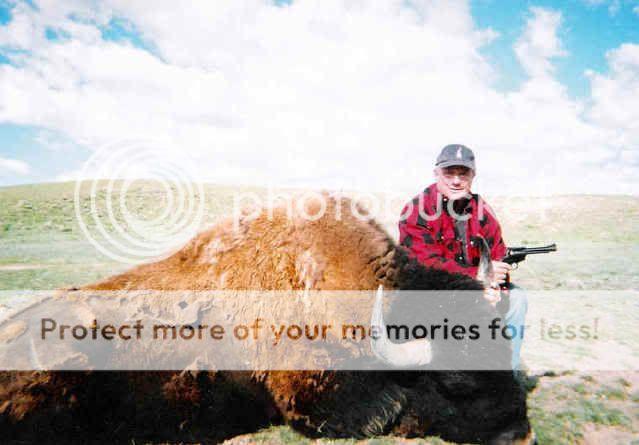spiaailtli
Active Member
- Joined
- Dec 27, 2009
- Messages
- 26
I researched this for about 20 years and found some interesting information. Is there such a thing as hydrostatic shock (or whatever you wish to call it)? Yes.
To further complicate things I discovered through a University study on spinal injuries that in four legged critters the walk/run function is controlled 80% in the spine and 20% brain, unlike humans where it is controlled 100% by the brain.
I learned there were 3 studies (that I'm aware of) with high volume kills under libratory conditions and all DRT kills resulted from the same function. A couple of lesser studies in which animals where shot with a wide range of calibers and bullet styles also resulted in the same findings.
There was also one study I found in which at least one person was shot thru the heart and the results recorded.
An animal with the heart completely destroyed still has brain activity for 19 seconds. A deer can cover up to 300 yards in that amount of time.
Most hunting bullet designed is counterproductive to DRT kills.
In my mind one final piece of the puzzle needs to be answered. A device needs to be built that records all phases of an animal's heart beat with a variable control to cycle through the high and low range. This device needs to be connected to a gun so the precise triggering of the weapon can occur at the proper time. The shot must happen on an unsuspecting animal and the bullet placement should be lung only. Record the number of DRT vs. non DRT over the cycle of the heart beat. My theory is it more about the position of the valves and back pressure that causes the vessels in the brain to burst.
This is much the same as adding the phase of the cycles in an electrical signal.
BTW, there were studies done by universities and the FISH & Wildlife departments in which hunters where placed by officials and not allowed to move. After shots were fired all data was collected and distance to the animal was recorded. Hunters were allowed to use whatever caliber that wanted but data was recorded on type of ammo, caliber, distance to the animal at the time of the shots, etc. There were some very clear winners when it came to bore size and bullet types for DRT kills. J
To further complicate things I discovered through a University study on spinal injuries that in four legged critters the walk/run function is controlled 80% in the spine and 20% brain, unlike humans where it is controlled 100% by the brain.
I learned there were 3 studies (that I'm aware of) with high volume kills under libratory conditions and all DRT kills resulted from the same function. A couple of lesser studies in which animals where shot with a wide range of calibers and bullet styles also resulted in the same findings.
There was also one study I found in which at least one person was shot thru the heart and the results recorded.
An animal with the heart completely destroyed still has brain activity for 19 seconds. A deer can cover up to 300 yards in that amount of time.
Most hunting bullet designed is counterproductive to DRT kills.
In my mind one final piece of the puzzle needs to be answered. A device needs to be built that records all phases of an animal's heart beat with a variable control to cycle through the high and low range. This device needs to be connected to a gun so the precise triggering of the weapon can occur at the proper time. The shot must happen on an unsuspecting animal and the bullet placement should be lung only. Record the number of DRT vs. non DRT over the cycle of the heart beat. My theory is it more about the position of the valves and back pressure that causes the vessels in the brain to burst.
This is much the same as adding the phase of the cycles in an electrical signal.
BTW, there were studies done by universities and the FISH & Wildlife departments in which hunters where placed by officials and not allowed to move. After shots were fired all data was collected and distance to the animal was recorded. Hunters were allowed to use whatever caliber that wanted but data was recorded on type of ammo, caliber, distance to the animal at the time of the shots, etc. There were some very clear winners when it came to bore size and bullet types for DRT kills. J



